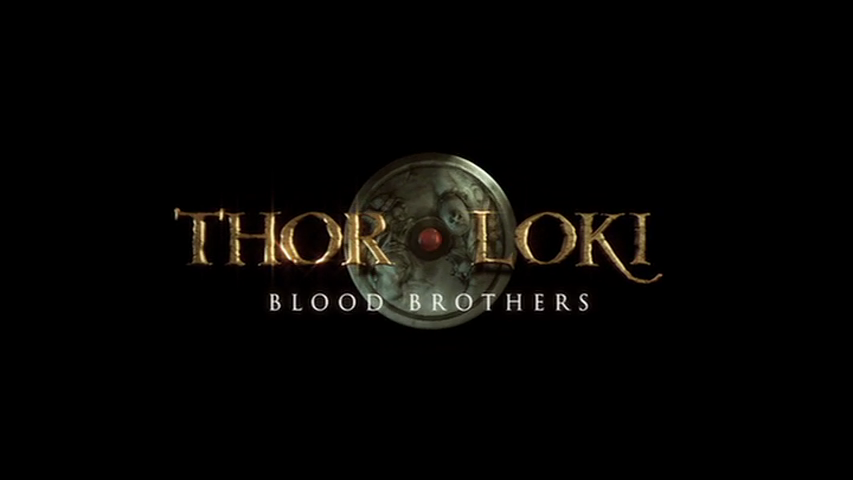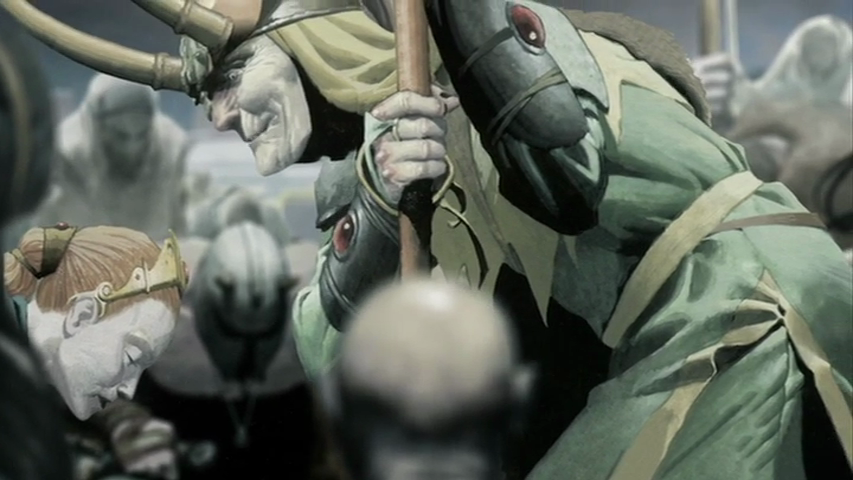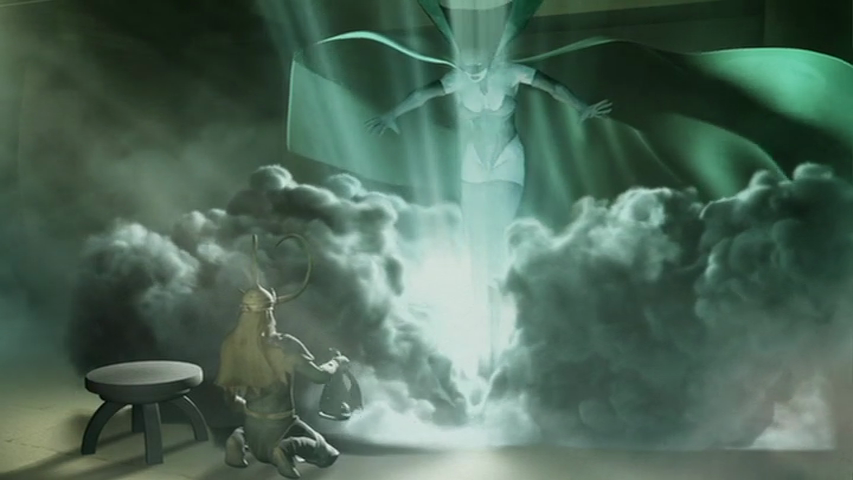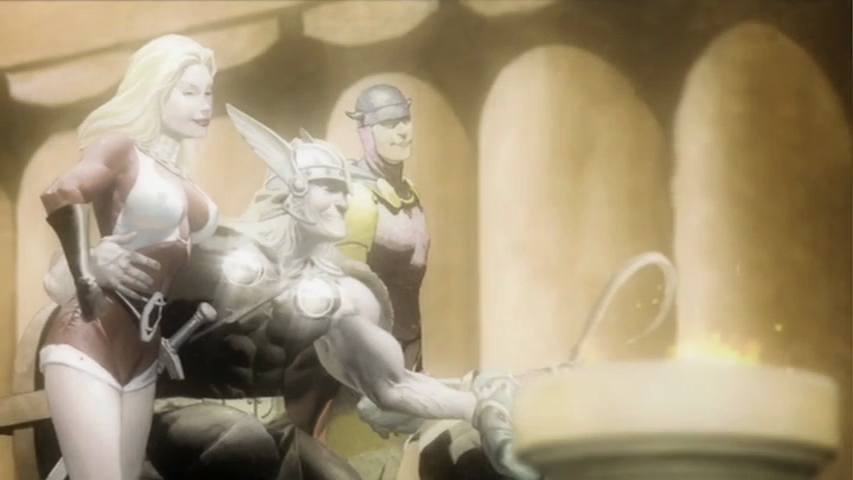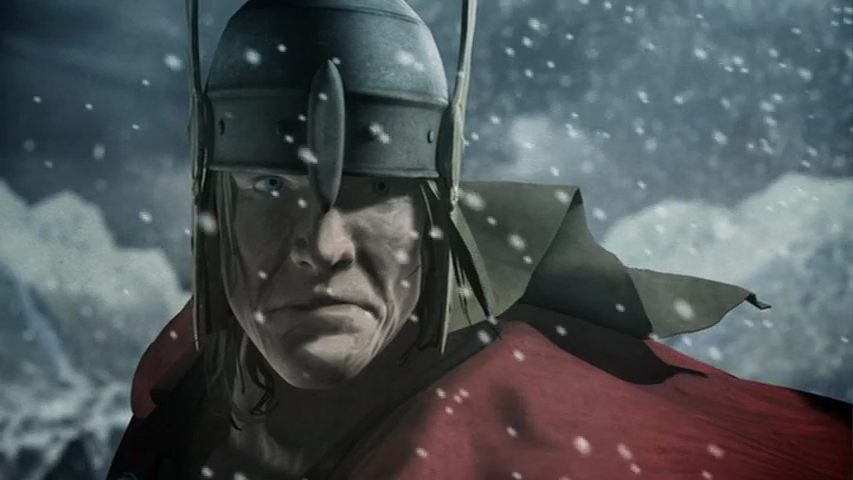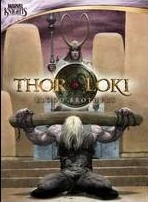 BUY NOW FROM AMAZON: CLICK HERE!
BUY NOW FROM AMAZON: CLICK HERE!
STUDIO: Shout! Factory
MSRP: $9.99
RATED: Not rated
RUNNIG TIME: 72 minutes
SPECIAL FEATURES:
- An Exclusive Look Back with Writer Robert Rody and Artist Esad Ribic
- Behind the Scenes of Thor & Loki: Blood Brothers
- Trailer
- Other Marvel Knight Animation trailers
The Pitch
The kids think reading is for nerds, so make those panels move with another motion comic.
The Humans
David Blair, Deborah Jane McKinely, Elizabeth Dinnet, and Daniel Thorn
The Nutshell
Animation brings the comic to life.
The Lowdown
Marvel Knights Animations don’t make typical cartoons. Instead of the action packed, laser-fueled, robot battles of the 90s X-Men and Spiderman cartoons, they make motion comics. The studio takes the comics, renders to 2-D and, occasionally, 3-D animations, putting the story right on the screen, which should please fanboys in need of direct translation. In this case, along with Magnetic Dreams Studios, Marvel Knights takes a stab and Robert Rodi and Esad Ridic’s now classic Loki mini-series.
But adaptation requires more than throwing the story on screen. Comics and video are two very different mediums, despite what many insist. Comics force the reader to make connections from one panel to the other. If Loki moves his hand in two panels, the reader must assume movement based on their positions. Film fills in those gaps. Now, Loki’s hand must move, changing the pace, involvement, and atmosphere of the story.
Rodi’s story remains intact. In a classic “What if?” manner, Blood Brothers opens with Loki taking up the throne of Asgard. After defeating his brother, Loki sends his brother to the stockade to await execution. Over the next 24 hours, Loki visits with his subjects, other monarchs, and mystical forces, all of which remind the jester god that he is not fated nor capable of being king.
Throughout the four episodes, Loki looks to prove his worth and struggles with the crown. First, he’s tired of the mundane requests of his subjects, finding his desire to be overlord to common people a little less exciting than he believed. Then, he meets with Hela, another god with twice the power of Asgard’s new rules, who wants the life of Thor. Loki spends the next four episodes building up the nerve to follow through with his orders.
Rodi makes good use of the characters and story. After nearly fifty years of waiting in the wings, Loki gets the chance to tell his side, and it isn’t pretty. Taking obvious cues from Shakespeare, Loki’s internalizes his struggle. Like Hamlet, he’s indecisive. Like MacBeth, he’s a pawn. Like King Lear, he’s foolish. And like all of them, he’s crazy. Thor has almost no lines in Blood Brothers, and spends most it chained to a wall, but Loki’s ascension is an immersive substitute for the incessant hammering of the God of Thunder.
The Shakespearian overtones make a great match for the slow animations. With the stiff movements of the 2-D animations, forcing the characters to a standstill, Loki gets what is, essentially, a one man show. Rodi and Rici’s tight framing and plodding narration allots Loki the time to become a real character. He’s not the monologuing villain, rather he’s dissecting his character with more defined characters. “The lord of misrule cannot rule,” Balder, Thor’s half-brother, proclaims, and Loki knows it’s true.
Motion comics, as a whole, is a new medium. A hair over a decade old, motion comics still have a few kinks to work out, and they show in. As such, the film has a number of great moments of fantastic contemplation, detailing and utilizing Ridic’s watercolor, and terrible moments of dated CGI battle scenes, which seem better suited for an episode of Reboot. The 3-D renderings of Thor, Sif, and Loki ruin the pacing of the film, which shifts from dramatic Shakespearian readings to awkward movements devoid of physics. Less is more seems to be rules of motion comics–the less movement the better.
Despite the medium’s title, motion comics rely on the voice casting more so than the actual motion. Blood Brothers definitely makes up for the subpar action scenes with a capable voice cast. David Blair’s boisterous Loki and Katherine Chesteron’s Hela play together MacBeth and Lady MacBeth. They have dimension that the 3-D animation cannot match. Like an audiobook, the voice acting carries the work.
Thor & Loki: Blood Brothers is an experiment that hits upon the limitations of the format. When the story and art take over, Blood Brothers resembles a great rendition of an already classic comic. Yet, when Magnetic Dreams over animates and spoils certain scenes that would benefit from simpler movements. Motion comics need a better implementation of motion, but as Blood Brothers displays, a good story can power through anything.
The Package
Blood Brothers does about all it needs to in terms of DVD. There’s not a trove of easter eggs, but you do get your money’s worth.
Kicking things off is an interesting interview with Rodi and Ridic about their work on the original, four-part Loki comic. Both offer great interpretations of their work and the reception behind it. Rodi raves about his work on Loki and describes some of influence and technique. Ridic remains a bit more reserved but does divulge some insight into his own fantastic art. Fans of both the comic and motion comic will eat this up.
The next three portions of the disc take a behind the scenes look at the Blood Brothers production. This is broken into three parts, which helps explain the DVDs origins, as well as the experimental aims of the Marvel Knights imprint. Even though the 3-D renderings don’t work in this case, the team’s willingness to make mention of the limitations of the piece, as well as some of its shortcomings, make the disc’s follies more digestible. Unlike just about every other making of featurette, this one puts a lot of context behind Blood Brothers and makes the whole thing work better because of it.
Rating: 




Out of a Possible 5 Stars
